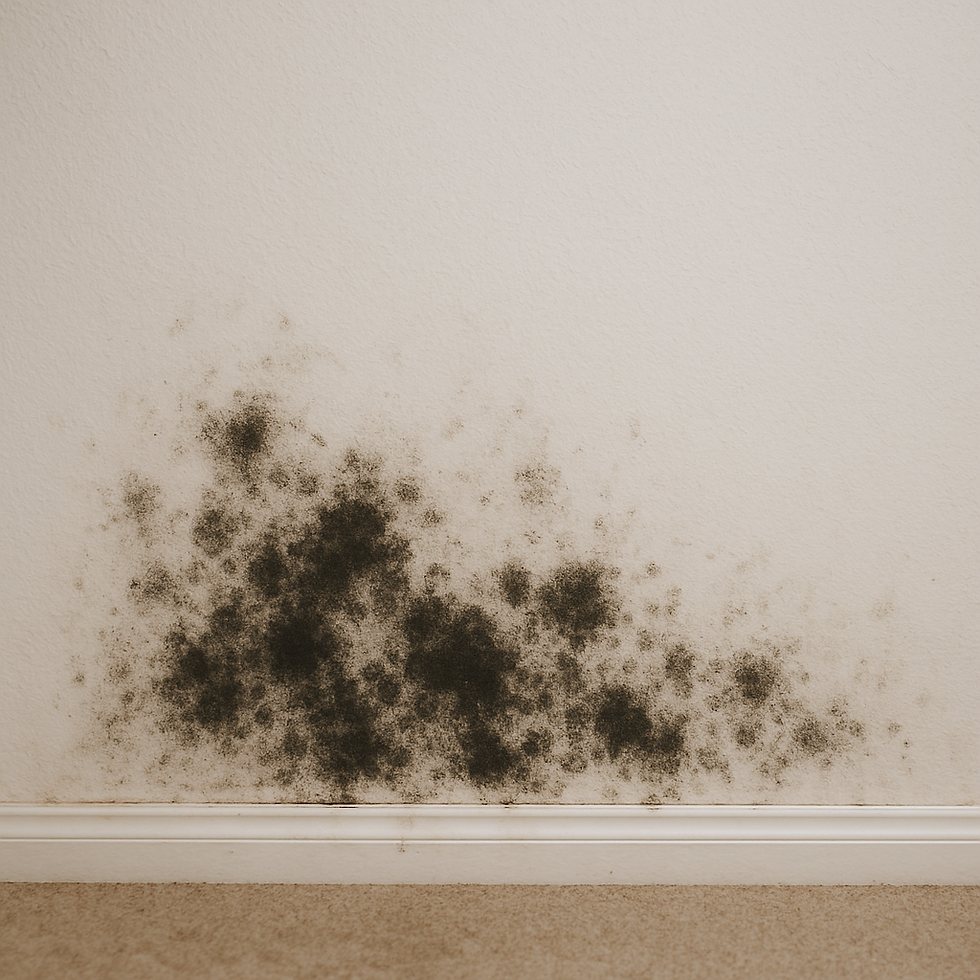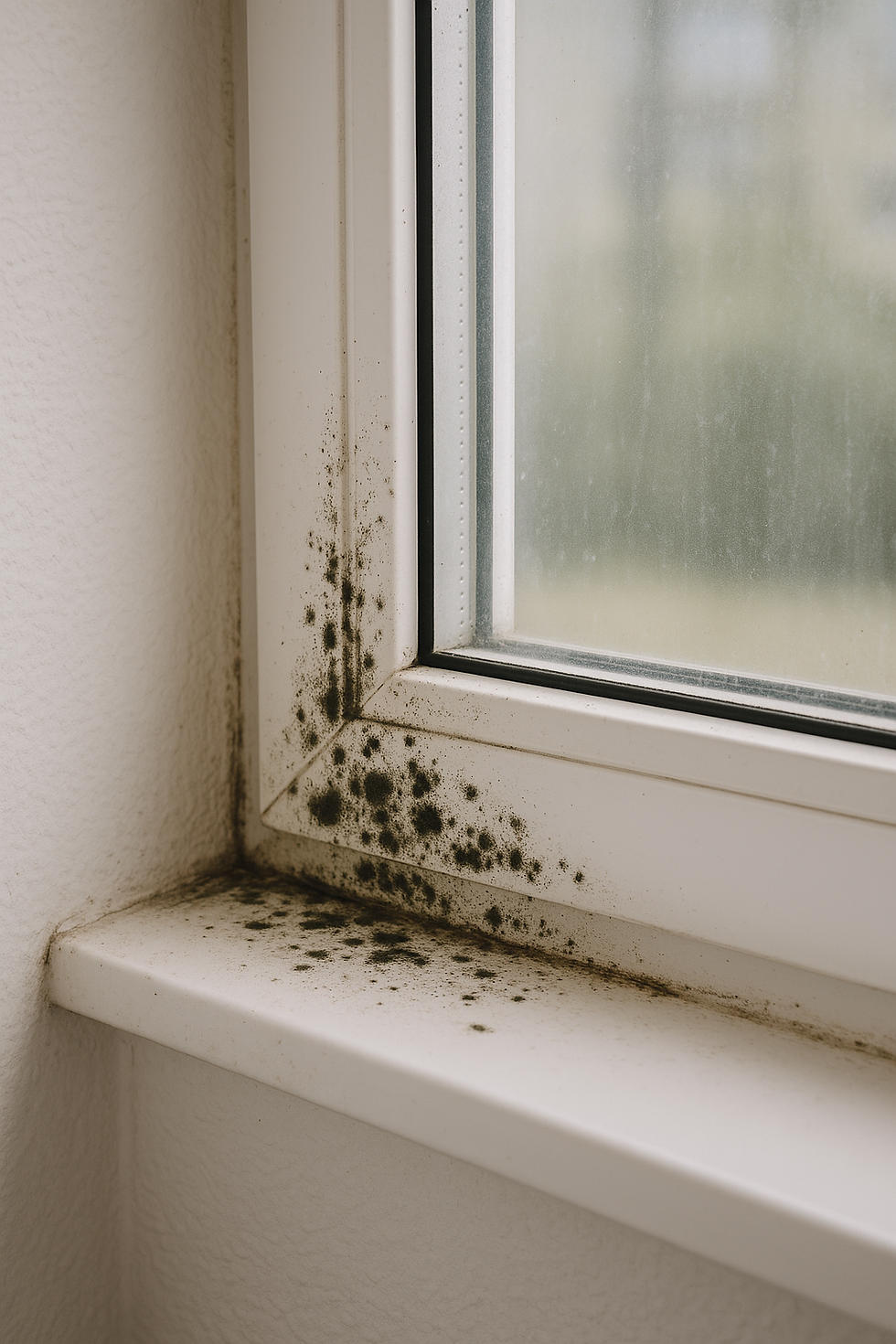The 5 Most Common Types of Mold & How They Can Affect You
- James Higginbotham
- Apr 29
- 2 min read
When people think of mold, they often imagine the same green fuzz on old bread or damp basement walls. But in reality, there are many types of mold, and each one can have different effects on your health and your home.

1. Black Mold (Stachybotrys chartarum)
This is the one most people have heard of—and for good reason. Black mold thrives in consistently damp areas like behind walls after a leak or under carpeting. It’s been associated with respiratory issues, chronic fatigue, and in some cases, more severe neurological symptoms. While not every dark mold is “toxic,” Stachybotrys deserves attention because of the environment it grows in—areas with long-term moisture problems.

2. Aspergillus
Aspergillus is extremely common and often found indoors. It can trigger allergic reactions, respiratory infections, and asthma symptoms, especially in people with weakened immune systems. It doesn’t always look alarming, but it can quietly colonize HVAC systems, insulation, or drywall. Many people live with it unknowingly.
3. Aspergillus
This type of mold is commonly found on wood, carpets, and fabrics. It’s black or olive-green in appearance and can cause allergic reactions like sneezing, watery eyes, and skin rashes. It can grow in both cool and warm environments, which means it’s often found in places people don’t suspect—like air vents or under window frames.
4. Penicillium
Penicillium has a blue or greenish color and is known for spreading quickly. You’ll often find it on water-damaged materials like wallpaper, ceiling tiles, or carpet. It can cause sinus infections, inflammation of the lungs, and allergic reactions. Its spores can also become airborne, making it more likely to circulate throughout the house.

5. Alternaria
Alternaria is one of the most common molds found in homes, especially in damp areas like bathrooms and under sinks. It’s usually dark green or brown with a velvety texture. This mold is a known allergen and can contribute to asthma attacks and other breathing issues.
Different Mold, Similar Impact
While these types vary in appearance and growth conditions, the symptoms they cause often overlap: coughing, sneezing, itchy eyes, chronic sinus issues, or general fatigue. That’s part of what makes hidden mold so tricky—it’s easy to blame symptoms on other causes like allergies or stress.
Most Mold is Hidden
Many types of mold grow behind walls, under floors, or inside HVAC systems. By the time you see or smell it, it may already be widespread. That’s why identifying the type of mold isn’t just about curiosity—it helps pinpoint the source and understand how long it’s been there.
You Might Not Know It's There
Even clean homes can have mold. It doesn’t always grow in messy or neglected areas. It often hides in places no one checks—like inside drywall after a small leak or under a bathroom cabinet.
When to Take Action
If you or anyone in your household has persistent allergies, unexplained fatigue, or ongoing respiratory issues, it might be more than seasonal allergies. Mold could be the hidden culprit.
If you suspect there may be hidden mold in your home, feel free to reach out to us for professional testing. A thorough inspection can uncover what’s lurking behind the walls—before it becomes a bigger problem.



Comments